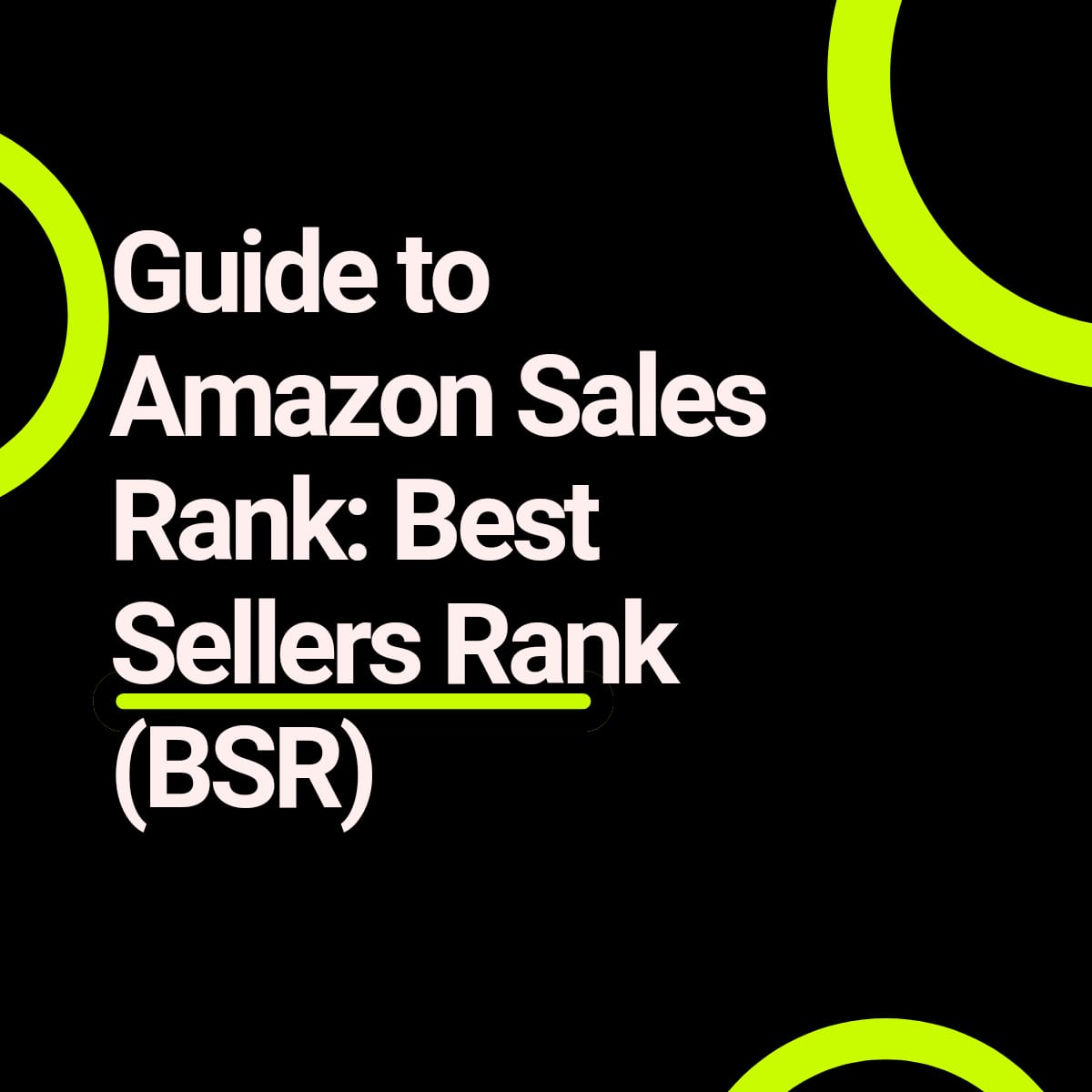Introduction
Amazon Sales Rank is one of the most crucial metrics that sellers monitor to understand product performance. Whether you are an established seller or a newcomer on Amazon, learning about Best Sellers Rank (BSR) can significantly influence your strategy for better sales and visibility.
What is Amazon Seller Rank?
The Amazon Sales Rank, is a number assigned to products based on their recent sales performance relative to other products in the same category. The lower the Best Sellers Rank (BSR) , the more sales a product has generated.
- Calculated Daily: The BSR is updated hourly based on recent sales, reflecting both short-term sales spikes and longer-term sales consistency.
- Category-Specific: BSR is assigned within specific product categories and subcategories. A product can have multiple BSRs if it belongs to more than one category.
How is Amazon BSR Calculated?
While Amazon’s algorithm remains proprietary, some elements contribute to determining BSR:
- Sales Velocity: The most significant factor is the sales velocity—the number of units sold in a given time frame.
- Recent Sales Trends: Products with recent sales see quicker changes in BSR.
- Historical Sales Data: Consistent sales over time positively impact a product’s rank.
- Product Returns and Cancellations: Returns may negatively impact BSR as they effectively “reverse” a sale.
MECE Framework for Understanding BSR
Mutually Exclusive:
- BSR vs. Organic Ranking: Differentiating the two to avoid confusion.
- Sales Volume Impact: Analyzing how sales frequency affects rank.
- Categories and Subcategories: How they influence ranking.
Collectively Exhaustive:
- Optimizing Listings for BSR: Strategies to boost sales and improve ranking.
- Monitoring Competitors: Benchmarking against competitors with similar BSR.
- Influencing Factors Beyond Sales: Other elements such as reviews and pricing.
Key Factors That Influence BSR
| Factor | Impact on BSR | Tips to Optimize |
|---|---|---|
| Sales Velocity | High sales improve BSR quickly. | Run promotions or ads to drive sales spikes. |
| Product Listing | A well-optimized listing drives traffic. | Use SEO-focused titles, bullet points, and images. |
| Customer Reviews | Positive reviews enhance buyer trust. | Encourage reviews via follow-up emails. |
| Pricing Strategy | Competitive pricing attracts more buyers. | Regularly check competitor pricing and adjust. |
| Return Rate | High return rates lower BSR. | Maintain quality to avoid returns. |
Understanding BSR Across Categories
Amazon organizes products into categories and subcategories. A product can hold a top BSR in a subcategory even if it ranks lower in a broader category. For instance, a book might be #1 in “Business Books” but #50 in “Books.”
Why Categories Matter:
- Niche Dominance: Focusing on subcategory BSR can make your product stand out in a specific niche.
- Sales Strategy: Targeted marketing efforts can help boost your product’s rank in a narrower category.
How to Improve Your Product’s BSR
- Enhance Product Listings:
- Title: Include relevant keywords and make it compelling.
- Images: Use high-quality images that show multiple angles.
- Bullet Points: Clearly list benefits and features.
- Run Amazon PPC Campaigns:
- Invest in Amazon Ads to increase visibility and sales.
- Target specific keywords to attract buyers who are ready to purchase.
- Utilize Promotions:
- Run Lightning Deals or Coupons.
- Temporarily lower your price to boost sales volume.
- Leverage Social Proof:
- Encourage satisfied customers to leave reviews.
- Respond promptly to both positive and negative reviews.
Monitoring and Analyzing Your BSR
It’s crucial to regularly track BSR to gauge the effectiveness of your strategies:
- Amazon Seller Central Reports: Use these reports to analyze daily sales trends.
- Third-Party Tools: Tools like Helium 10 or Jungle Scout offer in-depth insights into BSR changes and competitor rankings.
Key Metrics to Monitor:
- Sales Trends: Compare sales volume against BSR changes.
- Competitor Analysis: Track BSR for competing products in your category.
- Conversion Rate: A higher conversion rate generally correlates with better BSR.
Common Myths About Amazon BSR
- BSR Directly Affects Organic Rankings: BSR and organic rankings are separate; high BSR products often rank higher, but they are not directly linked.
- BSR Remains Constant: BSR fluctuates continuously based on real-time sales data.
- You Can’t Compete in Highly Competitive Categories: Focusing on subcategories can help smaller sellers gain visibility.
Conclusion
Understanding Amazon’s Best Sellers Rank (BSR) can provide a significant competitive advantage. By optimizing product listings, running targeted campaigns, and consistently driving sales, sellers can improve their BSR and achieve greater visibility, leading to sustained growth.

